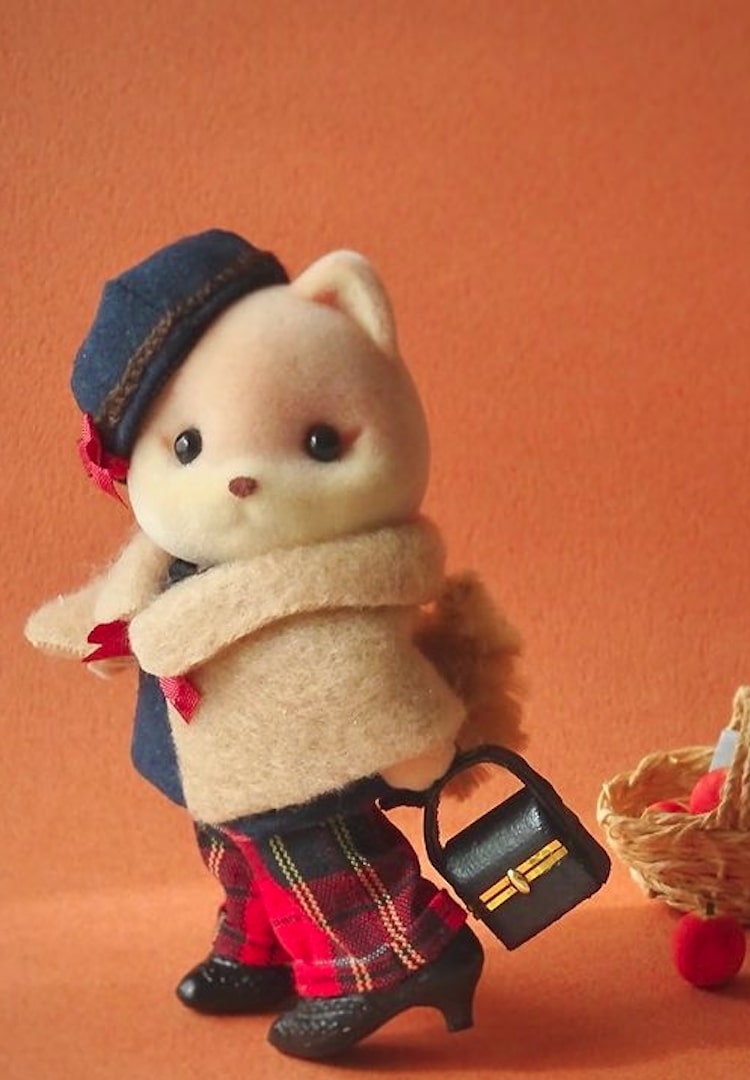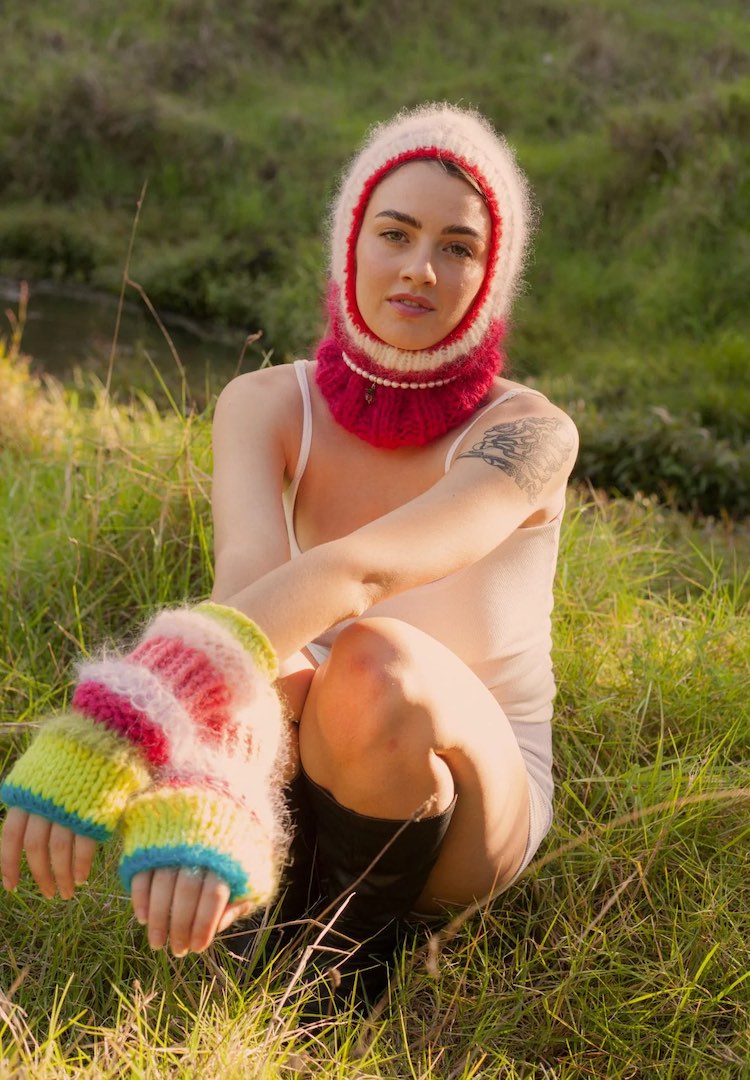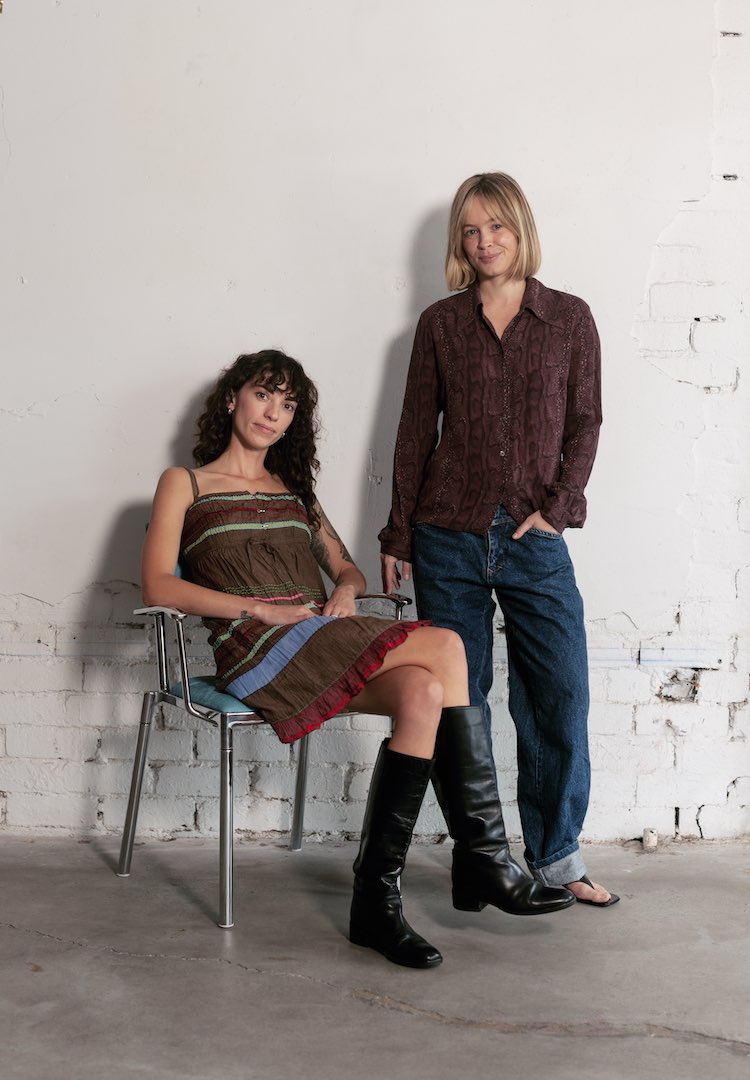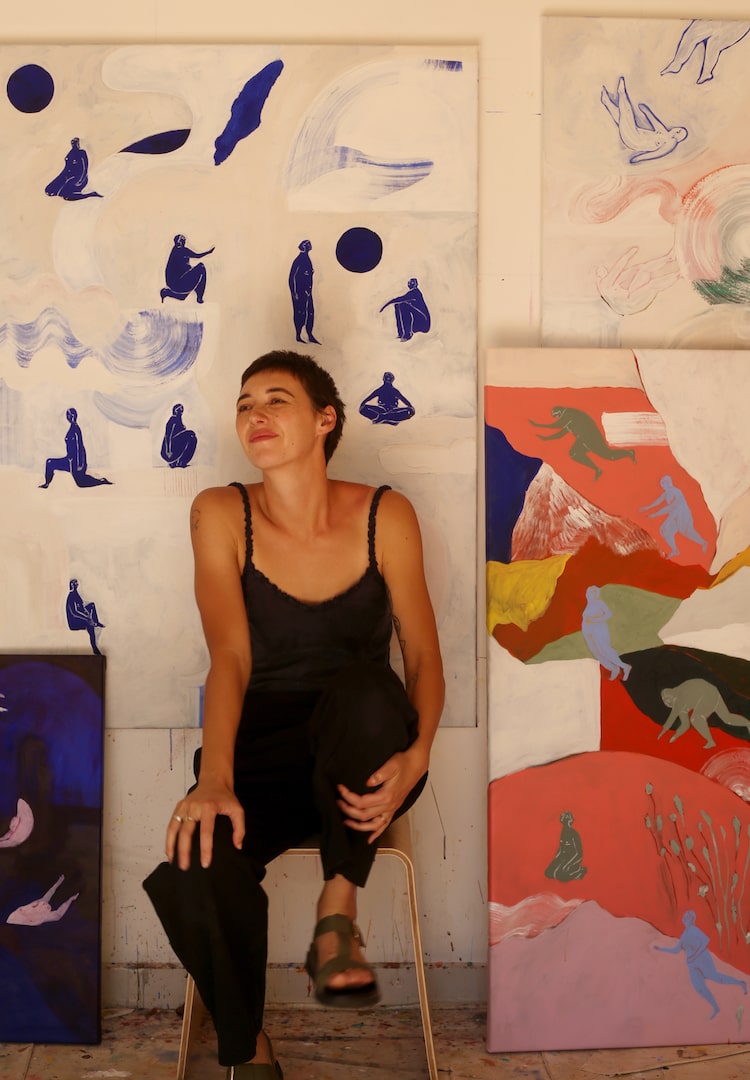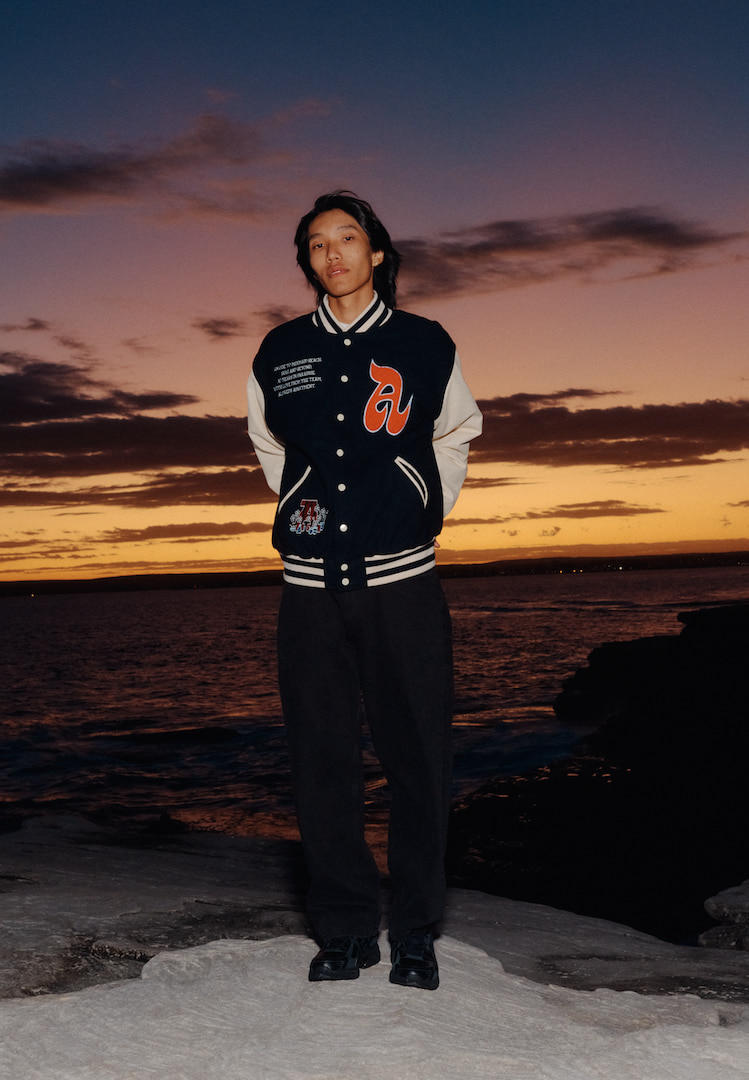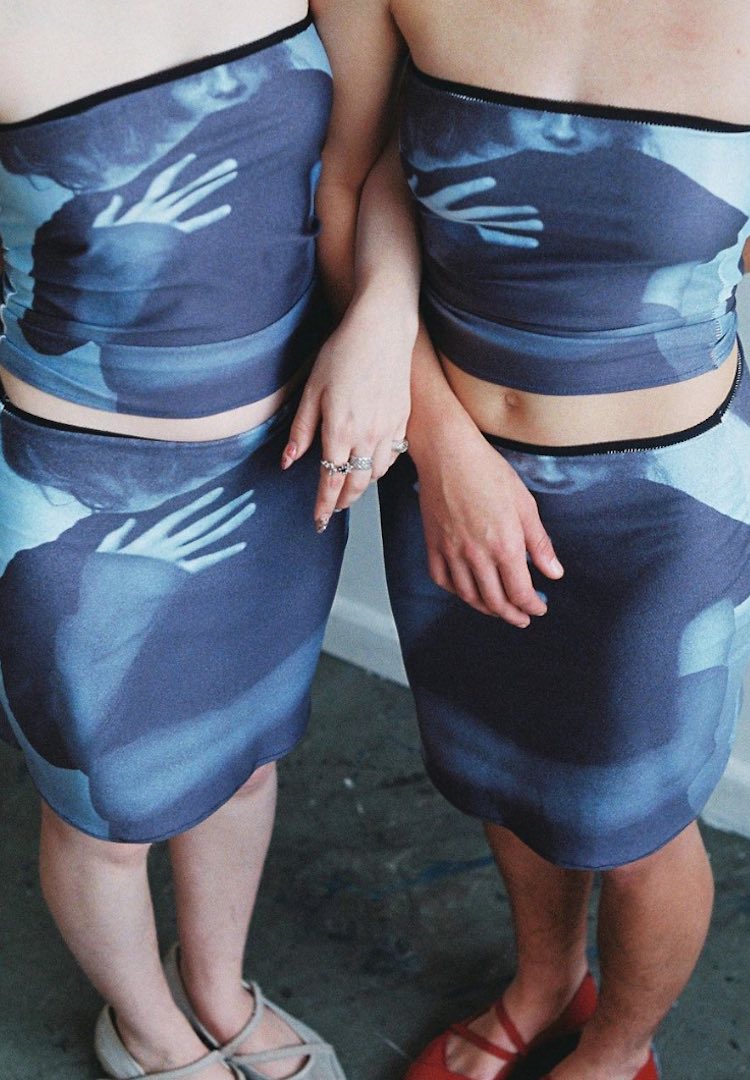What is a leaky identity and how does it affect you?
PHOTOGRAPHY BY NIKOLA DUKIC
WORDS BY ALEXANDRA ENGLISH
And how to cultivate and nurture your inner world in 2020 and beyond.
One of my greatest sources of joy is taking an evening walk and seeing a square of light up ahead. I become almost giddy: someone hasn’t closed their blinds yet. (Yes, I am aware this is creepy.)
The warm golden glow calls out to me like a beacon, and it takes every ounce of restraint I have (and sometimes the restraint of my walking partner) to stop me from squishing my face against the window. Artworks, bookshelves, open wardrobes, kitchen benches crowded with half-made dinners: I want to drink in these empty rooms, these private worlds.
Catching glimpses of the interior is a guilty pleasure in the truest sense of both words. You can imagine my delight then when Zoom became the new way of communicating, and Twitter went mad with people admitting they were more interested in the contents of their colleagues’ homes than the content in the meeting.
But at the same moment I realised I was not alone in my infatuation with sneaking peeks at people’s private worlds, I realised those very worlds were endangered.
The declaration that everyone is nosy, that everyone is an opportunistic voyeur of the worlds we’re not supposed to see, changes the very nature of the privacy we devilishly love to observe. People started to arrange their home offices for maximum Zoom-snooping effect. I did it too: vases of flowers positioned almost out of shot, the right books piled the right way on the right shelf behind me, artwork hung just-so.
All arranged in the most carefully haphazard way, like when you pretend your bed hair formed while you were sleeping and not over 45 minutes in the bathroom with a round-edge straightener and a bottle of sea-salt spray.
Seeing someone’s private life is so tasty because so little in our world feels authentic anymore. This is why I can’t help but look (from a distance, facing forward, from the corner of my eyes, of course. I’m not a complete creep).
But when people start intentionally showing us their private lives, or their performative-private lives, they destroy precisely what is so delicious about it. The private oxidises in public. Destroying the private for the sake of the public means destroying a precious part of themselves that should be held sacred.
I don’t mean to say everyone should cultivate a private life so I can peer through windows at night. I am saying the opposite: that no matter how much we enjoy being nosy creeps, everyone deserves to be able to draw the curtains on parts of their lives. In our current era, every light is on and every curtain is open.
The case of the leaky identity
It used to be public life (work), personal life (friends and family), private life (alone). Now, who can tell where one ends and one begins? In a story for Repeller (formerly known as Man Repeller), Hayley Nahman described how she struggled to carve out a private life for herself, or even define what it meant.
“A personal life is not one’s ‘home life’ nor ‘private life’ either – it’s less specific. A feeling maybe.” She laments that “our modern culture has erased our boundaries. We’re like an open-concept office with free snacks but nowhere to take phone calls and cry.”
In these pandemic times, much has been written about how our work selves and our personal and private selves are getting jumbled up as many of us work from home.
As the New York Times article ‘Don’t Work on Your Party Laptop or Party on Your Work Laptop‘ quoted Ashley Whillans, an assistant professor of business administration at Harvard Business School saying, “If we already thought there was no separation between work and home, we’re really struggling now that we’re basically living at work.”
A cartoon in the New Yorker seconded that. A man is at his desk asking his wife (or colleague, who can tell?), “I can’t remember, do I work from home or do I live at work?” Pandora Sykes, co-host of The High Low podcast and author of the essay collection How Do We Know We’re Doing It Right? wrote about the confusion of selves using the concept of the leaky identity.
It’s a phrase borrowed from the writer Derek Thompson, who coined it in an article for The Atlantic. Sykes writes: “The office and home were once strictly separated by physical distance, but now – thanks to the internet and smartphones, which mean you are always available, always on – the walls between work, home and our social identity have collapsed.”
But the leaky identity goes deeper than whether you can separate your work desk from your dining room table. Even before COVID, the lines between our public, personal and private lives were less like clear divisions and more like pencil smudges: they are drawn, erased and moved, but the original line, faint as it may be, is still there if you look close enough.
“All these worlds usually have organic, innate boundaries,” explains psychologist Samantha Symes. “But with how we chose to live through social media and COVID, those boundaries are blurred.” You could say it started with the personal-as-personal-brand, always-on, always-optimising social media movement.
Hobbies are side-hustles; the aesthetic of the grid is more important than the content shared (which led to the subsequent rise of the finsta, where freedom reigns and the grid doesn’t matter); the ‘How I get it done’ routines that take a leisurely morning walk and coffee and turn it into ‘an opportunity for productivity optimisation’.
But it goes beyond that into the public expression of the personal and public consumption of the private. When we’re spending time with family and friends (personal), there’s a compulsion to share those moments with the public. When we’re alone (private), there’s a compulsion to refresh Instagram to see how everyone else is spending their time. And the more personal – or seemingly personal – their content, the better.
We devour people’s depictions of their personal and private selves, but how do we know it’s the organic version and not a processed, sugar-filled knock-off posing as the real thing? Do we even know which version we’re sharing?
This blurriness leads to another problem: the loss of the authentic self. The overly polished social media self is slammed for being fake; the messy, truly personal self is slammed for being inappropriate for public viewing. (Take the reactions to Chrissy Teigan’s pregnancy loss post as an example.)
How do we reconcile our public and private selves?
But then again (can you hear my brain pinballing off each thought?) should your public self even have to be your authentic self? By its very nature, your public self may not be synchronous with who you are in private.
Your self, Sykes writes, is not necessarily shaped by you, it’s “crafted and reinforced through social experience. It is not false to shape-shift according to feedback – it’s human instinct. We naturally present a rotating roster of selves to our best friend, parent, boss, child, pet hamster and so on.”
She adds that we often feel that it’s inauthentic to “present one self online and another at home. And so we attempt to break down these boundaries through endless sharing, turning ourselves inside out for the consumption of others… This is me, says our every tweet or Instagram post. This is the real me.”
“There’s sometimes a compulsion to share the very personal, private parts of us; our private thoughts and your personal world,” Symes says.
When private thoughts enter the public realm, the very idea of a private life is shattered before the likes even roll in. But then it gets erased even further, she adds, because “not only can everyone see your thoughts, they can also comment on them and bring their own thinking to them”.
Acclaimed author Zadie Smith has spoken about how the private life and personal space disintegrate upon the touch of another person. She spoke about how, after school as a kid, she would come home and spend time alone in her room.
It was a way of separating her school persona from the Sadie-with-an-S her family knew and the private self only she knew. Her public and personal lives couldn’t infiltrate that space. But now it is eliminated with the ping of a notification.
So how do we – and should we – reconcile these selves and these worlds to protect the private? “It is important to maintain all three lives,” Symes says.
“Some might take conscious attention and some might happen organically.” She adds that it can help to redefine the parameters. “Boundaries don’t have to be hard; it’s about determining what serves you in a positive way,” she says. “It’s about self-protection, safety and sustainability.”
And it’s not just about what you withhold from others; there’s also something nice about keeping things for yourself. As the psychotherapist Gillian Straker told ABC Life, “We are definitely entitled to have our own inner subjectivity and our own inner lives. With social media we are having less and less private space, so to have some private space… feels to me a positive.”
“We all have an inner world,” Symes adds. “It’s your choice whether you want to explore it, utilise it more, expand it. To maintain an inner life is to be reflective, introspective, to think about what you want for yourself.” And as Nahman writes, it can “invite a sense of mystery and texture back into our lives”.
So while I will forever delight in those guilty glimpses of the interior, the next time I see a light on in an open room, I won’t turn my head. Well, at least I will try.



